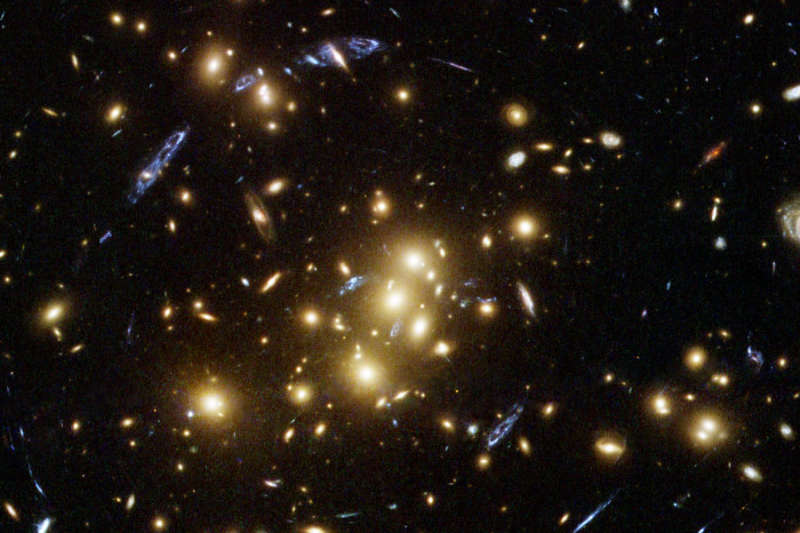Giant Cluster Bends, Breaks Images

Explanation:
What are those strange blue objects?
Many of the brightest blue images are of a
single,
unusual, beaded, blue, ring-like
galaxy which just happens to line-up behind a giant
cluster of galaxies.
Cluster galaxies here typically appear yellow and --
together with the
cluster's dark matter --
act as a
gravitational lens.
A
gravitational lens can create several images of
background galaxies,
analogous to the many points of light
one would see while looking through a
wine glass at a distant street light.
The distinctive shape of this background galaxy --
which is probably just forming -- has allowed
astronomers to deduce that it has separate
images at 4, 10, 11, and 12
o'
clock,
from the center of the cluster.
A blue smudge near the cluster center is likely
another image
of the same background galaxy.
In all, a
recent analysis postulated that at least 33 images of 11 separate background
galaxies are discernable.
This
spectacular photo of galaxy cluster CL0024+1654 from the
Hubble Space Telescope
was taken in November 2004.
Authors & editors:
Robert Nemiroff
(MTU) &
Jerry Bonnell
(USRA)
NASA Web Site Statements, Warnings,
and Disclaimers
NASA Official: Jay Norris.
Specific
rights apply.
A service of:
LHEA at
NASA /
GSFC
& Michigan Tech. U.

